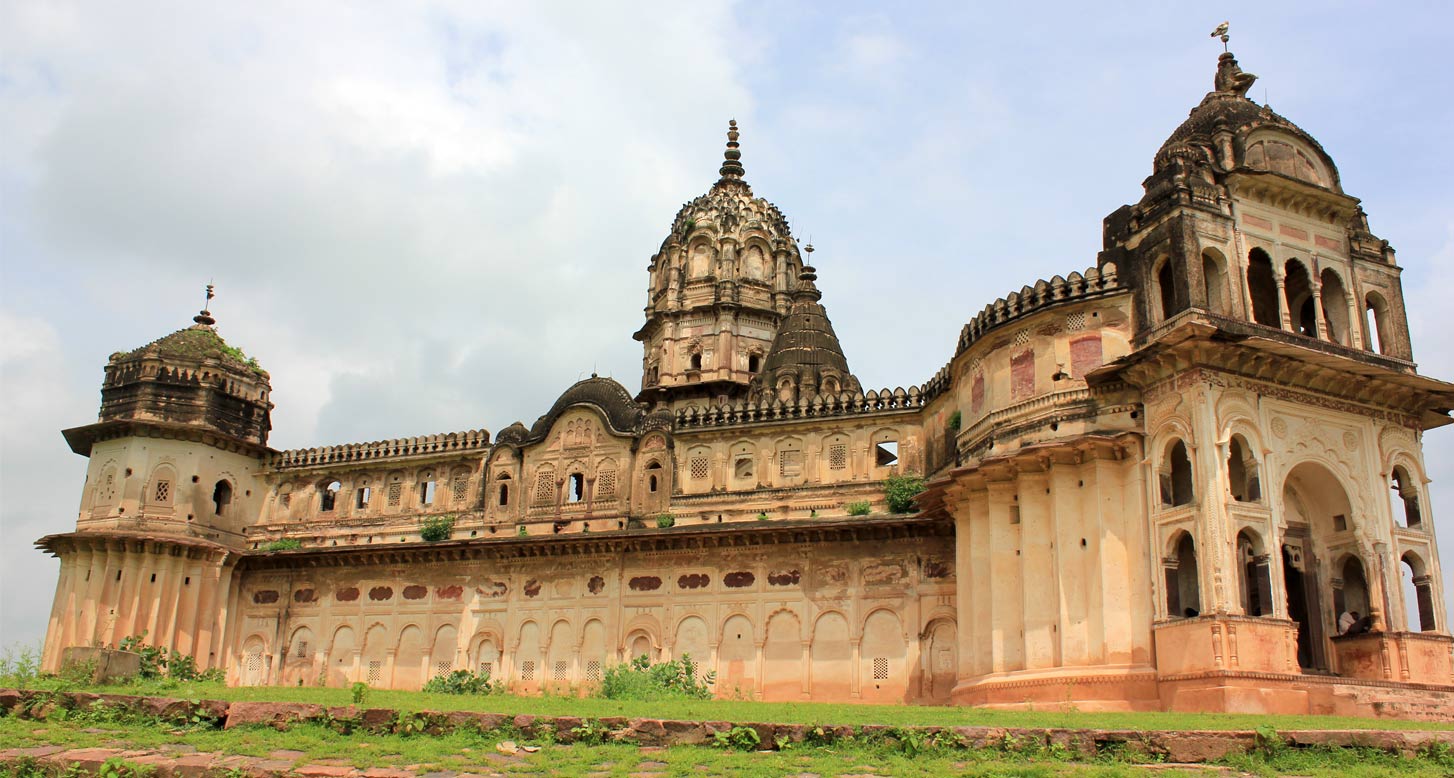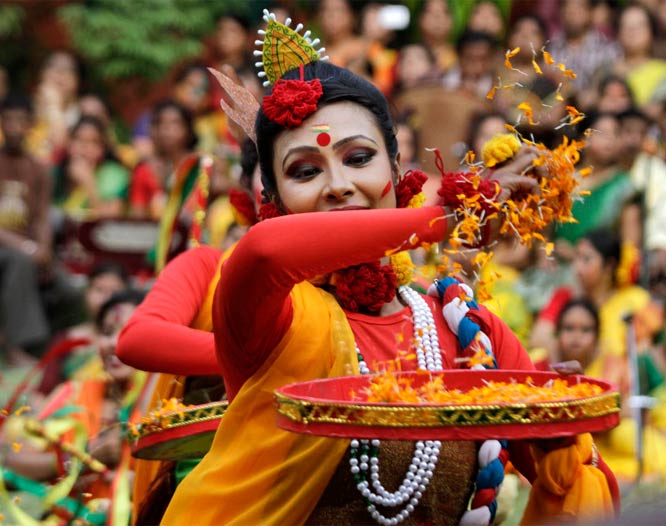
Days
Highlights:
Description: Arrive in Delhi. After you have cleared immigration and customs formalities, you are met outside the arrival hall by our representative, who will be holding a sign with your name. He will escort you to your vehicle and assist with transfer and check-in formalities at your hotel. (Check-in time 14:00 hrs) Delhi, India's capital and political hub is an ancient city that has something for everyone. Settled seven times over the centuries, this city has grown in a way that reflects its past, while retaining its cosmopolitan flavor. Delhi is India's showcase, be it architecture, religion, shopping, culture - everything is available here - waiting to be discovered. Imposing, inspiring and right at home among the grand landmarks of the New Delhi's Diplomatic Enclave, this iconic palace style hotel makes a significant statement in terms of architecture and intent.
Locations: Delhi
Highlights: Explore Old and New Delhi
Description: After breakfast proceed for a tour of India's capital. Start your day with a tour of Old Delhi, driving along the Rajpath and visiting the Asia's largest mosque known as Jama Masjid. A ride on a pedicab/rickshaw will take you to the heart of Old Delhi, allowing you to savour the sights, smells and sounds of this ancient city, its past reflected in its present. Your guide will take you through winding lanes recounting tales, anecdotes and legends of a Delhi that goes back thousands of years. The tour takes you to the age old Silver market, through quaint streets selling incredible ware. Drive past Red Fort to visit city's largest Sikh Temple known as Bangla Sahib Gurudwara. After lunch, the sightseeing of the New Delhi begins with drive past India Gate, built in memory of Indian soldiers killed during the First World War, Rashtrapati Bhawan, built in the early 20th century as the Imperial residence of the Viceroy, today the official residence of the President of India and Parliament House, an unique circular building with huge colonnades, houses the Upper and Lower Houses of Parliament. Visit Humayun's Tomb, the first Mughal garden tomb, with its four grand gateways, octagonal base-plan, soaring niche-shaped arches, lofty double domes and the symmetrical garden with its central canal. The sightseeing tour of New Delhi comes to an end with the visit of 70-meter high Qutub Minar, which looms majestically across the wide plains of Delhi. It was built during the 12th century Delhi Sultanate period and commemorates the conquest of Delhi by Qutb-ud-din Aibak, the slave and chief general of Mohammad Ghauri.
Locations: Delhi
Highlights: Taj Mahal and Agra Fort
Description: After breakfast, drive to Agra on the Yamuna Expressway (180 km/3.5 hrs). Upon arrival in Agra, check in at the hotel. Agra is renowned the world over for the fabulous Taj Mahal, and is situated on the right bank of the river Yamuna. Agra is a city with a glorious past and has the distinction of being the capital of various ruling dynasties. In the afternoon, visit the red sandstone Agra Fort, which stands like a crescent on the banks of the Yamuna River, enclosed by forbidding 20-meter high walls, with a 12-meter moat between them. Three successive Mughal emperors - Akbar, Jehangir and Shah Jehan - helped create this massive structure which contains Hindu and Muslim architecture. The structure of Agra Fort at Agra and Red Fort at Delhi is moreover the same from inside. The highlight of your trip will be a visit to the Taj Mahal, (CLOSED ON FRIDAYS) the greatest monument to love and one of the wonders of the modern world, constructed by Emperor Shah Jehan as a mausoleum for his beloved queen Mumtaz Mahal. Completed in 1652, skilled craftsmen from Persia, Turkey, France and Italy and some 20,000 labourers worked for 17 years to build this edifice, Marble was brought from Makrana, near Jodhpur and precious stones of onyx, amethyst, malachite, lapis lazuli, turquoise, jade, crystal and mother of pearl were carried from Persia, Russia, Afghanistan, Tibet and China. After admiring the beauty of Taj during sunset, return to your hotel of stay.
Locations: Agra
Highlights:
Description: After breakfast, drive to Chambal (70km/2 hrs) The National Chambal Sanctuary is a 400 km stretch of the river Chambal and a 1 to 6 km wide swath of the ravines on both sides of the river, covering an area of 1235 sq. km. The Chambal Ravines (altitude 200-500 m) are the product of ce nturies of soil erosion by flood and rain waters. They form an incredible maze of intertwining mud cliffs, with tropical dry scrub forest vegetation, that provide shelter for numerous birds, mammals and reptiles. On arrival, check in at the Safari Lodge
Locations: Chambal
Highlights: Explore Chambal
Description: After breakfast, spend the day exploring Chambal. With a rich heritage stretching back many millennia, the Chambal Valley has much to offer - stunning landscapes, magnificent wildlife, formidable fortresses and crumbling ruins, tranquil temples and flamboyant fairs, colourful history and compelling mythology, a proud resilient people and its legendary exploits. Discover the many facets of this ancient land at your own pace, accompanied by experienced local guides and naturalists, using various modes of transport - boats, jeeps, horses, bicycles or on foot.
Locations: Chambal
Highlights: Explore Gwalior
Description: After breakfast, depart for Gwalior (145km/4 hrs) Gwalior was established in the 8th century and named after Saint Gwalipa. Formally the capital of Madhya Bharat (Central India) it was ruled by Tomar kings, the Mughals and the Marathas. On arrival, check in at the hotel. In the afternoon, take a tour of Gwalior, The city is dominated by its hill-top fort, one of the most redoubtable in the world. Rajput valour and chivalry are redolent in the very stones of the 15th century Palace of Raja Mansigh located in the citadel. The fort also houses the Teli-ka-Mandir, an ancient temple. Gujri Mahal at the foot of the fort has one of the finest museums of sculpture in India. Gwalior also has the distinction of being a centre of Indian classical music. Miya Tansen, one of the nine jewels of the court of Emperor Akbar, belonged to Gwalior and is buried here. A festival of music is held here each December to commemorate this great singer.
Locations: Gwalior
Highlights: Explore Orchha
Description: After breakfast, transfer to the railway station to board the train to Jhansi. You are met on arrival at Jhansi railway station and transferred to Orchha On arrival, check in at the hotel. Orchha, founded in the 16th century by the Bundela king, Rudhra Pratap, on the banks of the Betwa River, is a medieval city frozen in time and space, existing even today as it must have done in the 16th and 17th centuries, when it was built. The countryside undulates gently between riverine plains and rolling forest-clad hills and the landscape is dotted with palaces and temples, a fortress and cenotaphs. The architecture is a synthesis of traditional Hindu, hybrid Indo-Saracenic and ornate Mughal. One of the finest sights is the view of the cenotaphs from across the Betwa River.
Locations: Orchha
Highlights:
Description: After breakfast, depart on the drive to Panna National Park An area of 543 sq. km, it comprises of an incredible wilderness of valleys and gorges bordering the Ken river and countless post-monsoon waterfalls. It is one of the more recent National Parks dotted with living temples of a bizarre Spanish style that amused the Maharaja of Panna. On arrival, check in at the hotel
Locations:
Highlights: Explore Panna
Description: Enjoy an early morning game drive in the park. The teak forest harbours tiger, leopard, Nilgai (blue bull) sloth bear, panther, cheetal (spotted deer), sambhar, chinkara (Indian gazelle) and chowsingha (four-horned antelope). The rare gharial and mugger crocodiles can be found in the Ken, which passes through the park for 50 km. There is a profusion of paradise fly-catchers, Madhya Pradesh's state bird. After breakfast, a host of activities are available. You could walk through the crop fields, stopping at a nearby village to get a glimpse of the lifestyle of its simple hospitable inhabitants. You could relax under the shade of a neem tree or laze around in the tranquil surroundings before dinner under the stars.
Locations:
Highlights: Explore Kajuraho, evening aarti in Varanasi
Description: After breakfast, drive to Khajuraho (48 km/1 hr). This little village is renowned the world over for its fine temples, built between 950 and 1050 AD, which are among the most creative examples of Indian architecture. Only 22 of the original 85 temples survive today. The most popular theme is woman: reflective, playful, amorous. The carvings also depict gods in cosmic evolution, griffins, nymphs, beasts, demons in revolt and the several emotions of man - fear, doubt, jealousy, ardent love and consummate passion. The western group, contained within a fenced enclosure, is well maintained as a park. The large Lakshmana Temple is dedicated to Vishnu and is one of the earliest of the western enclosure temples, dating from 930-950 AD. It is also one of the best preserved, with a full five-part floor plan and four subsidiary shrines. The Vahara Temple, dedicated to Vishnu's boar incarnation (Vahara avatar) faces the Matangesvara Temple and has a huge solid and intricately carved figure of the boar incarnation, dating from around 900 AD. The Kandariya Mahadev Temple is not only the largest but also artistically and architecturally the most perfect. Build between 1025 and 1050 AD, it represents Chandela at its finest. The Mahadeva Temple is small and mainly ruined. However, it houses one of Khajuraho's best sculptures - a fine sardula figure caressing a lion. The Devi Jagadamba Temple was probably originally dedicated to Vishnu, but later changed to Parvati and then Kali. The Chitragupta Temple is unique in being dedicated to the Sun God, Surya. The Matangesvara Temple, standing next to the Lakshmana Temple, is not within the fenced enclose, because it is still in everyday use, unlike all the old temples. Transfer to Khajuraho airport for the flight to Varanasi. This is the religious capital of the Hindu faith since the dawn of history. Known as Kashi in the 7th century BC it constitutes a microcosm of Indian life. No one knows how old it really is - when Lord Buddha came here in 550 BC, it was already a flourishing ancient settlement. You are met on arrival in Varanasi and transferred to the hotel. Later in the evening, take a boat ride to watch the spectacular aarti ceremony, when a group of young priests perform a ritualistic ceremony commemorated to "Agni", the Lord of Fire, amidst devotional chants and music. Thousands of butter lamps are lit and set afloat on the sacred Ganges.
Locations: Varanasi
Highlights: Explre Varanasi and also visit Sarnath
Description: Early in the morning, before sunrise, take a boat ride on the sacred Ganges River, where devout Hindus can be seen performing their daily ablutions. The bathing ghats, over 5 km in length, lead down from a steep bank to the river, are the soul of the city. Here, where the wavelets of the Ganges lap the last of the stone steps, can be seen young Hindu men practicing Hatha yoga, older men seated, eyes closed in medication, Brahmin priests under sunshades, waiting to bless the passing pilgrims and beggars sitting in serried ranks. Manikarnika burning ghat is the chief cremation centre of Varanasi. Corpses lined in white silk or linen are borne on bamboo stretchers to the smoking pyres, where they are deposited to await their turn. Photography is not usually permitted here. Walk through an inextricable maze of small streets and alleyways, hiding in disorderly array no less than 2,000 temples and shrines. Domes, pinnacles, towers and derelict 18th-century palaces dominate the left bank of the Ganges River. The streets are noisy, colour is rife. Return to the hotel for breakfast. Later in the morning, visit some of the more important temples such as the Bharat Mata Mandir and the Durga Temple. Go past the beautiful Tulsi Manas temple. Take a walk down Vishwanathji Ki Gali - the ancient alley which is home to some beautiful temples. Here you will find shops that sell every conceivable item required in a temple. In the afternoon, visit Sarnath. Located 9 km from Varanasi, it is the centre of the Buddhist world, just as Varanasi is that for the Hindu. It was here that Buddha preached his first sermon, partially recorded on one of its stones. Dhamek Stupa dating back to 500 AD is the largest, with geometrical ornaments on its wall. Dharmarajika Stupa was set up by emperor Ashoka to contain the bodily relics of the Buddha. There is an outstanding museum, worth visiting (CLOSED ON FRIDAYS).
Locations: Varanasi
Highlights:
Description: Breakfast at the hotel. Afternoon transfer to the airport for your flight to Delhi. Transit to the international airport for your onward flight home
Locations:
The Tour Includes :
- • 11 nights hotel accommodation on twin share, bed and breakfast basis • Full board at Chambal and Panna • 1 air-conditioned chauffeur-driven standard car, for all transfers, sightseeing and drives • services of English-speaking accompanying Indian escort/guide for the entire tour • A/C chair car train fare Gwalior=Jhansi • Entry fees to monuments (single entry) • Entry fees to national parks • 1 rickshaw ride in Delhi • One boat ride and one jeep ride in Chambal • 2 game viewing drives by shared jeep in Panna • One boat ride in Varanasi • current government hotel, road, toll and interstate taxes • current service tax and education cess payable on total bill
- • Domestic airfares (current price shown separately – subject to change • lunches and dinners EXCEPT at Chambal and Panna • porterage at railway stations, airports and hotels • surcharge payable in case alternate hotels, or a higher category of rooms are confirmed • expenses of a personal nature such as drinks, laundry, telephone calls, insurance, camera fees, excess baggage, emergency/medical costs • tips to drivers, guides and hotel staff, etc • any services not mentioned above • any increase in costs beyond our control such as fuel and airfare increases, government levies and taxes, etc




 +91 9810031654
+91 9810031654

